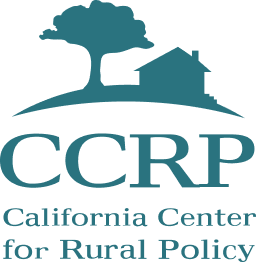Strategic Work Plan for Education Needs, Health Information Technology, Recruitment and Retention for the Diversified Healthcare Industry Cluster
Strategic Work Plan for Education Needs, Health Information Technology, Recruitment and Retention for the Diversified Healthcare Industry Cluster
Reports:
Del Norte County Health Care Provider Recruiting & Retention Plan
CCRP was granted a contract with Del Norte County to develop a healthcare provider recruitment and retention plan. The plan includes demographics of Del Norte County with GIS maps, results of community input through surveys and meetings, a summary of best practices from other rural areas, as well as an assessment of the economic impact of the health care system on the County.
To create the plan, CCRP worked with Research Associates, Martin Love (CEO of the Humboldt-Del Norte IPA, Foundation for Medical Care) and Erick Eschker, PhD (Associate Professor and Chair, Dept of Economics, HSU and Director, Index of Economic Activity for Humboldt County).
Reports:
Children’s Dental Strategic Plan for Humboldt County
The North Coast Grantmaking Partnership contracted with the California Center for Rural Policy to create a new dental strategic plan. Several factors led to this request. The Pediatric Dental Institute (PDI) in Windsor reported in spring 2011 that 142 children from Humboldt used their services at their clinic with full anesthesia (called hospital based care) within the prior year. PDI is currently facing economical challenges and now must raise $400,000 each year to continue. There is interest to reduce the number of children from Humboldt that need hospital based dental care. This very intensive and expensive treatment process is an indicator of missed opportunities for oral health education, preventive services, and early restoration. Consequently, to change the number of children needing this service, every aspect of oral health for low-income children should be reviewed and integrated into a smooth continuum of evidence-based care and education.
Reports:
Rural Ethnic Entrepreneurship: A Spatial Networks Approach to Community Development
This document presents our work around ethnic entrepreneurship in rural Mendocino County, California. Mendocino was selected as a representative example for issues common to many rural communities attempting to shift their economies from traditional resource-based extraction to other forms of business by leveraging their local resources and human capital. More information about the processes and tools developed through and used in this effort, a web site, www.peopleplaceandbiz.org serves as an excellent starting point to further explore the resulting “Biz Tool” providing an overview of key steps.
Reports:
McLean Community Study Final Report
This project investigates issues important to five Humboldt County rural communities: Fortuna, Rio Dell, Loleta, Hydesville and Carlotta, which comprise the McLean Community Study Area. These sampled communities contain a spectrum of natural resource dependence, rural economic stability and social diversity.
This is an exploratory study commissioned by The McLean Foundation to assess topics that are of importance to people in the Eel River Valley region. The goal is to assess the socioeconomic situation for people in the region with a focus on better meeting local needs.
Reports:
Rural Latino Project Final Report
Latinos are the fastest growing minority group within the Redwood Coast Region (Mendocino, Humboldt and Del Norte counties).This project adopts a place-based perspective of Latinos and the communities in which they reside. Developing a place-based understanding means focusing on rural Latinos within the larger context of resources, environment and space. We employed multiple research methods including: key-informant interviews, content analysis of newspaper articles, field research, and spatial analysis of primary and secondary data.
Reports:
People, Place and Health: A Sociospatial Perspective of Agricultural Workers and their Environment
This project employs a mixed-method, place-based approach to study agricultural worker health issues related to pesticide use in rural California. Sociospatial analysis considers space, place and social indicators in a holistic and integrated fashion (Steinberg and Steinberg 2008). This project utilizes Geographic Information System (GIS) to effectively integrate environmental and social data related to farmworker health and pesticide use.
We focus on environmental and social issues for farmworkers in the three communities in both Monterey and Tulare counties. Using this visual approach for communication and portrayal of data proves to be effective across both language and literacy barriers.
This report contains sociospatial data, consisting of both maps and interview data integrated to tell the stories of farm workers, their communities and pesticide drift. The project also incorporated extensive environmental mapping of pesticide use and application rates within the study region with associated qualitative data relating to farmworker health.
Reports:
